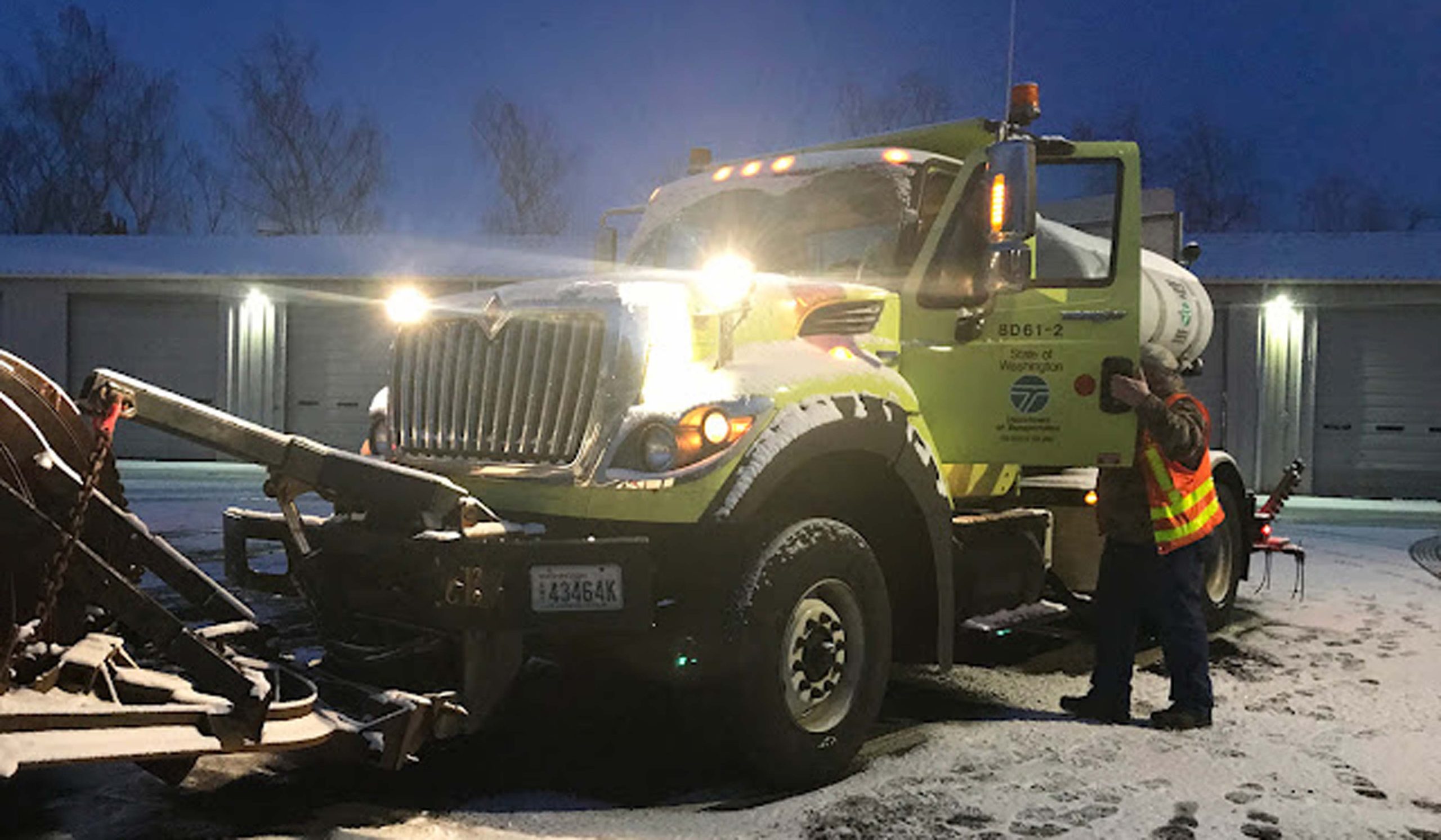Pre-wetting is an important part of the toolbox for winter road maintenance operations. The goal of this project was to compile a summary of pre-wetting practices, including equipment, materials, methods, and application rates, and to identify the history of successes and failures that have contributed to current practices. The researchers employed a comprehensive literature review, an online survey of winter road maintenance practitioners, interviews and case studies of nine agencies, and outreach to six equipment manufacturers and distributors. Through a synthesis of current and best practices, the project produced preliminary guidelines and recommendations based on trial-and-error and field experience.
Transportation agencies in northern climates have experienced many pre-wetting success stories. The pre-wetted material stays on the surface longer, produces less bounce and scatter, and resists traffic action. The case study agencies also reported that pre-wetting allows them to more quickly achieve a specified level of service. Pre-wetting also helps turn rock salt more quickly into a brine and accelerates the ice melting process. Field experience suggested typical savings of 25 to 30 percent less salt when pre-wetted salt was used. Pre-wetted abrasives can reduce the amount of material applied by as much as 50 percent in comparison to dry abrasives in low temperatures.
Salt brine is the most used liquid for pre-wetting rock salt and abrasives, and magnesium chloride and calcium chloride are popular alternatives in low temperatures when salt brine is less effective. Other additives can be admixed into chloride brines to reduce the corrosivity of the brine or enhance the snow/ice control performance of the pre-wetted salt.
In theory, only enough liquid to wet every particle of a dry material is required for pre-wetting. A pre-wetting rate of 8 to 12 gal/ton is effective, and 8 to 16 gal/ton is reasonable for increasing the speed of ice melting and for reducing the snow-pavement bond. Practitioners have reported that higher pre-wetting rates (more than 10 gal/ton) can achieve better operational results, thereby reducing the amount of granular salt needed.
Pre-wetting equipment can involve a variety of liquid delivery systems and spreader configurations. The easiest on-board pre-wetting process is spraying or streaming liquid material onto a spinner plate, which allows modification or adjustment of the equipment to achieve optimal efficiency of the pre-wet process. Another on-board pre-wetting process entails the spreading of solid and liquid materials simultaneously before they hit the road.
Most survey respondents reported that their agency switched from electric pump to hydraulic pump to allow the application of higher rates. Some DOTs also prefer hydraulic pumps because they are easy to calibrate or less prone to corrosion issues. However, the Washington State DOT has successfully used electric pumps for over 10 years; WSDOT reported that relative to hydraulic pumps, they have provided more volume and are less expensive, easier to maintain, and easier to adjust.
The survey respondents reported using multiple types of spreader configurations. Zero-velocity spreaders and pre-wetting techniques have yielded bare pavement in half the time of standard methods, while reducing salt use by 70 percent and salt cost per mile by about 50 percent. However, there is no good way to spread sand with zero-velocity spreaders.
The most used nozzle is the fan nozzle, mainly because it can produce a more uniform coverage. Many agencies also use stream nozzles because they allow the liquids to be more focused on solids.
Pre-wetting equipment can be at least as reliable as other winter road maintenance equipment. However, it is crucial to calibrate pre-wetting equipment at the beginning of season and maintain it at the end of the season. System flushing and nozzle/screen cleaning are required at least twice per season.
Agencies may face initial resistance to pre-wetting from operations staff or other stakeholders, but training and information dissemination, coupled with effective field trials, will mitigate concerns and build rapport.
Authors:
Xianming Shi
Dave Bergner
Sen Du
Dale Keep
Cheryl Reed
WSU Department of Civil and Environmental Engineering
Sponsors:
Clear Roads Pooled Fund
Minnesota Department of Transportation

